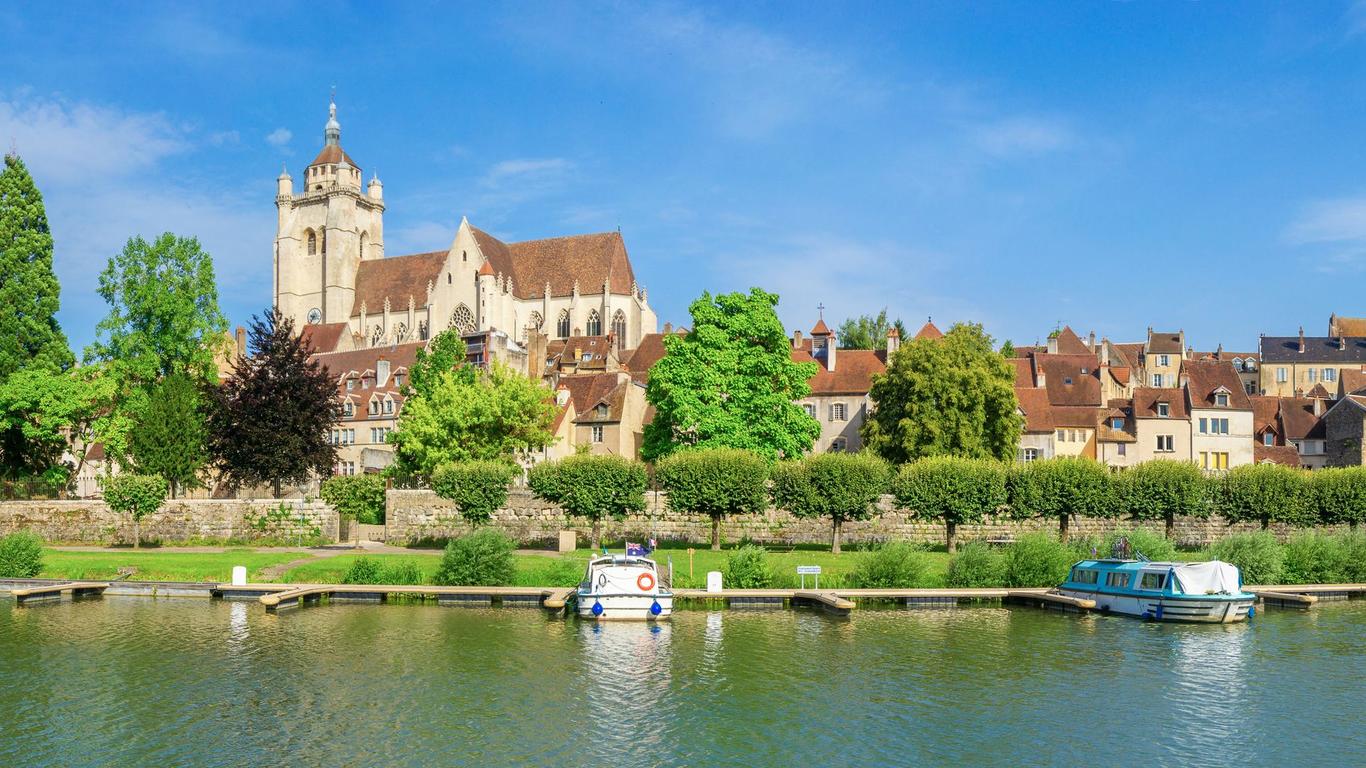Perched on a limestone ridge above the River Doub, Dole is a historic town in the Bourgogne-Franche-Comté region of eastern France. It served as the capital of Franche-Comté until the region was annexed by Louis XIV in 1678. Dole’s historic core features a maze of winding laneways where the renowned French chemist Louis Pasteur spent his childhood days.
Things to do in Dole
Dominating the skyline of Dole is the 73-metre-high bell tower of the Collegiate Church of Notre Dame, which was built in the 18th century in a mixture of Flamboyant Gothic and Renaissance architectural styles. Step inside to see the 3,500-pipe organ built by Riepp and the nave paintings by Laurent Pécheux, together with the marble lectern dating back to 1765.
Art enthusiasts can visit the Musee des Beaux-Arts de Dole, which exhibits paintings and sculptures from across France and Italy. Roman sarcophagi and Palaeolithic artefacts are on display in the basement galleries while contemporary pieces from the Nouveau Réalisme movement can be found on the upper floor.
The birthplace of Louis Pasteur has been transformed into a museum dedicated to the life and legacy of the microbiologist, including displays detailing the discoveries and advances he made. Located in what was once the tanning district, the Maison de Louis Pasteur also exhibits leatherworking tools belonging to his father and instruments donated to the museum by Pasteur’s grandson.
Getting around Dole
Dole–Jura Airport is a 10-minute drive from the centre of Dole and has flights to destinations across Europe and North Africa. The much larger Lyon-Saint Exupéry Airport is just over two hours away. Regular trains connect to the Dole railway station and buses travel throughout the town. The centre of Dole can easily be explored on foot.





